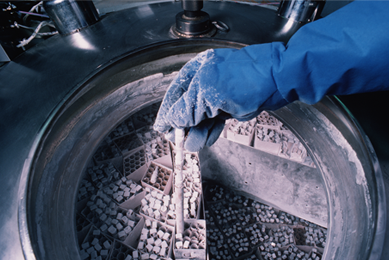While historically common, recent concerns regarding safety and reproducibility have led researchers to reevaluate the use of media containing animal by-products. Let’s explore some of the reasons for steering away from animal by-products in cell culture media and the benefits that stem from this choice.
- Consistency and Reproducibility:
Cell culture experiments demand consistency and reproducibility to yield meaningful results. Animal by-products introduce variability due to inherent differences between batches, making it challenging to standardize experimental conditions. Opting for animal-free media components helps reduce experimental variability thus promoting reliable and reproducible outcomes across experiments. - Contamination Risks:
Animal-derived components in cell culture media pose an inherent risk for introducing contaminants. Viruses, prions, and other pathogens can be transmitted through animal by-products, jeopardizing the integrity of cell cultures. By choosing animal-free alternatives, researchers mitigate the potential for contamination, safeguarding the reliability of their experimental results. - Economic and Scalability Factors:
Eliminating animal by-products from cell culture media also brings economic advantages. Animal-free alternatives are often chemically defined, allowing for precise optimization of nutrient concentrations and consistency between batches. This enables long-term cost savings as these formulations are more stable, reducing the need for frequent quality control and revalidation. Moreover, scalable alternatives to animal-derived components can often be produced in larger quantities and at lower costs, benefiting both academic researchers and industrial applications. - Regulatory Compliance:
The use of animal-derived components may encounter regulatory challenges due to concerns about safety, traceability, and ethical considerations. Choosing animal-free alternatives aligns with evolving regulatory standards, making it easier for researchers to navigate compliance requirements.
The importance of quality and defined composition in cell culture media cannot be overstated. By avoiding the use of animal by-products, researchers can enhance the reproducibility and reliability of their experiments. Furthermore, the careful selection of animal-free alternatives mitigates the risk of contamination and ensures consistent and scalable results. ATCC is here to support researchers with animal-free cell culture solutions. ATCC provides many animal by-product free cell culture products such as defined basal cell culture medias, Non-Enzymatic Cell Dissociation Solution (ATCC 30-2103), and Serum-Free Cell Freezing Medium (ATCC 30-2600). Explore these options and learn how to adapt your cell lines to animal component–free culture conditions in our ATCC Animal Cell Culture Guide.
Did you know?
ATCC provides a variety of high-performance culture media and reagents, including antibiotics, buffers and stains, cryopreservation reagents, dissociation reagents, feeder layer cells, media, sera, substrates, supplements, and transfection reagents.
Meet the author
Tiffany Cato, MS
Manager, Laboratory Operations, ATCC
Tiffany is a Manager of Lab Operations at ATCC with over 12 years of experience in the life sciences industry. In her current role, she manages the Cell Biology Manufacturing, Science and Technology group as well as the Cell Biology Bioproduction group at ATCC, helping to bring innovative manufacturing solutions and new products to the ATCC catalog.
Explore our featured resources
Media and Reagents
ATCC high-performance media, sera, and reagents are recommended for best results and are uniquely formulated according to ATCC cell culture specialists.
MoreCell Proliferation Assays
ATCC cell proliferation assay kits are convenient and valuable tools for the quantitative evaluation of a cell population's response to external factors that affect cell viability and growth.
More
Cryopreservation Products for Cells
We offer recommended cryoprotectants and techniques to support cells so you experience maximum viability of cells in cell culture, including tools and a line of serum-free cryopreservation media to successfully cryopreserve cell cultures.
More